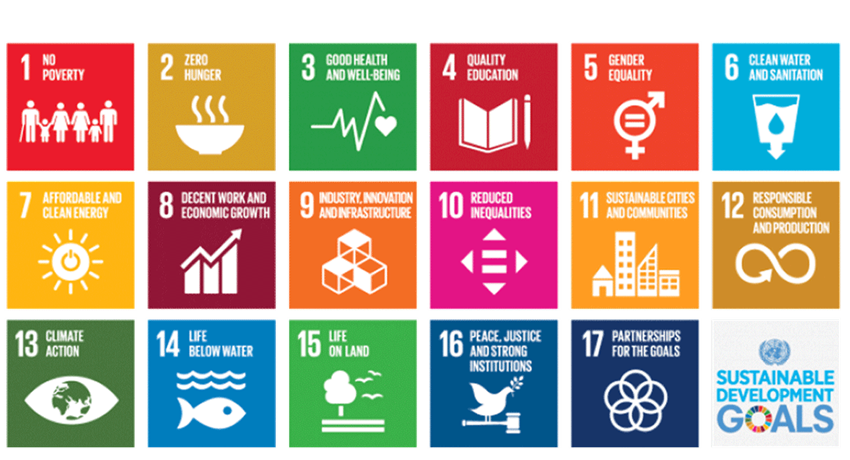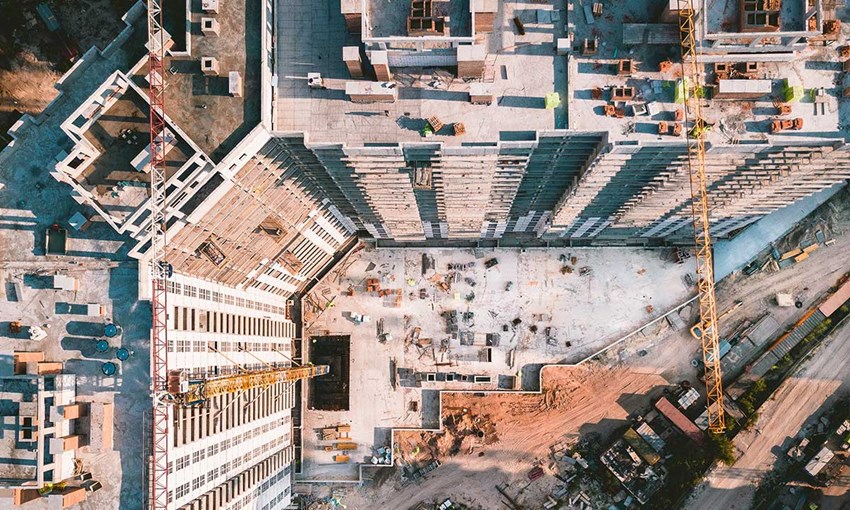2025 tradeshow highlights: BIMobject year-in-review
Discover key BIM trends from BIMobject’s 2025 event year insights from global tradeshows, digital workflows, sustainability talks, and manufacturer adoption.
The Sustainable Development Goals (SDGs) influence policies, attitudes, and how the building industry needs to evolve. But what do the 17 SDGs entail? Can BIM play a part in addressing them? And where do manufacturers fit in? Get the answers to these questions – and many more – in this 10-minute read.

Don't have the full 10 minutes? Jump to:
The SDGs, short for Sustainable Development Goals, is a set of 17 interlinked goals forming the “blueprint to achieve a better and more sustainable future for all by 2030” (UN mission statement). Building on years of work by the UN, the UN Department of Economic & Social Affairs, and individual Member States, the Sustainable Development Goals (SDGs) were adopted by the UN in 2015 and are intended to be met by 2030. The SDGs are:

Image sourced from un.org
The 17 Sustainable Development Goals are broken down into a list of 169 SDG Targets that are, in turn, tracked using 232 unique Indicators. By bringing together civil society and public and private organizations, the ambitious 17 SDGs are designed to create a better society for all by finding solutions for poverty, inequality, climate change, environmental degradation, peace, and justice.
The construction sector is waking up to the fact that sustainability is key, and it’s refreshing to report that technology plays an important role in helping to support the achievement of some of the SDGs.
Some might claim that building information modeling (BIM) can help achieve all of the Sustainable Development Goals in one way, shape or form. While that's true (albeit a bit of a stretch for some SDGs), we've decided to focus on the urgent goals we can impact today, tomorrow, in 2030 – and beyond. Let’s see which ones:
SGD 3 aims to promote healthy lives and promote well-being for all ages. While we can't hit all of the Targets in SDG 3, we can address Target 3.9: "By 2030, substantially reduce the number of deaths and illnesses from hazardous chemicals and air, water and soil pollution and contamination (UN).
The comfort of a building is strongly linked to indoor air quality. Indoor pollutants, often referred to as volatile organic compounds (VOC), can harm health. Creating an integrated workflow through BIM makes it possible to check and control VOC emissions from building materials. This is important because better air quality and circulation inside buildings reduce the risk of its users developing lung and respiratory diseases.

The World Green Building Council, the global managing body of LEED certification, also concludes that green buildings improve health and well-being by providing environmental amenities and reducing exposure to environmental hazards.
Pssst! Manufacturers who declare products on Prodikt's sustainability platform enable designers to compare and choose products based on their health-affecting properties. Find out what it means and how you can get on Prodikt today >
Mission statement: “Ensure availability and sustainable management of water for all.”
Pollution, high demand, and declining supplies are threatening the world’s availability and accessibility to water. According to the United Nations, 33% of the world’s population lack assess to safe drinking water. The issue deepens considering that 80% of wastewater is discharged into rivers or seas without any pollution removal (UN WATER).

Political pressure, increasing market demand for green-rated buildings, and industry attitudes are driving a new way of thinking about water usage in the building industry. But what part can BIM play? BIM can be applied to optimize water efficiency through data-driven design and operational decision-making.
In the design and construction phase, BIM can improve water efficiency by analyzing building performance and selecting the best-suited components. This can be anything from water pipe insulation that can be used to minimize leaks to which water-efficient taps, showers, and toilets should be used. To top it off, BIM enables project teams to mitigate waste and the demolition teams the intel they need for the proper disposal of materials.
SDG 8 revolves around promoting sustained, inclusive, and sustainable economic growth, full and productive employment, and decent work for all. Target 8.2 aims at achieving economic productivity through, among other things, technological upgrading and innovation in labor-intensive sectors.
The United Nations projects 230 billion square meters in new construction by 2060. This surge in demand creates jobs, but the industry needs to ramp up its productivity gains.
Building information modeling can pack a dramatic punch in terms of productivity. Primarily, BIM realizes this gain through its ability to foster communication and coordination, identify errors and reduce costs. Case in point: Malaysia's BIM mandate generated 60% productivity gains in 5 years.
BIM can also address Target 8.8. The data generated by the model is collated in a common data environment, which improves on-site coordination and promotes safe working environments.

The ninth Sustainable Development Goal revolves around building resilient infrastructure, promoting inclusive and sustainable industrialization, and fostering innovation. Industry, particularly global manufacturing, acts as a catalyst for the global development agenda to eradicate poverty and advance sustainable development.
Infrastructure plays a key role in the goal. However, a report by New Climate Economy found that $90 trillion of investment is needed in the next decade or so in the infrastructure sector to achieve a prosperous, net-zero emission future. But how can BIM create a motorway to SDG 9?
The key lies in the exchange of information. See, BIM makes it easier for project teams to handle and translate the abundance of construction data generated by complex infrastructure projects. Stakeholders can access holistic project information through a common data environment, which, in turn, removes silos, improves collaboration, and enables efficient design, construction, and lifecycle management of assets.
Another important aspect is cost savings. The detailed calculations and 3D visualizations BIM produces make it easier (and cheaper) for teams to plan structures that’ll remain safe and operational for years. Also, corrections can be made in the model before spending a single construction euro, dollar, pound, or yen – leaving more room to invest in other, critical infrastructure projects that enhance sustainable development globally.

Mission statement: “Make cities and human settlements inclusive, safe, resilient, and sustainable."
The UN states that by 2030 around 60% of the world’s population will live in cities. While cities are economic hotspots, they also contribute to 70% of all carbon emissions. And overcrowded cities put massive pressure on infrastructure and services. But how can BIM address the issue?
BIM gets maximum value out of scarce funds. According to ECSO’s Building Information Modelling in the EU construction sector, full-scale digitalization in non-residential construction would lead to annual cost savings of 13% to 21% in the engineering and construction phases and 10% to 17% in the operational phase – money which can be put into hospitals, schools, housing, waste management, water management, electricity, green spaces, infrastructure – the list can go on...
In addition, BIM in the form of digital twin technology can also aid in city planning and disaster risk management (Target 11B). Psst! Digital twins were mentioned numerous times during COP26.
If the world’s population reaches 9.6 billion by 2050, we would need three planets to provide enough natural resources to sustain current lifestyles (UN). SDG 12 wants to turn the dire forecast around by ensuring good use of resources, improving energy efficiency, sustainable infrastructure and, providing access to basic services, green and decent jobs, and ensuring a better quality of life for all.
The building industry hasn’t exactly nailed the practice of “doing more with less”. However, the demand for resource-efficient green-rated buildings and the wider adoption of BIM can give us a much-needed jolt in the right direction. But let's jump to two of the Targets:
Target 12.2 is all about sustainable management and efficient use of natural resources. A BIM model gives project teams the ability to run simulations on life-cycle energy and examine the products' sustainability- and lifetime performances before they're purchased. Including energy management systems can also deliver energy savings of 20%-30% (IEA).
Target 12.5 deals with reducing waste. BIM puts a stop to endless runs to the landfill by enabling project teams to forecast quantities and prevent clashes before the building’s built. In addition, BIM objects contain information about the building components’ material composition as well as potential recycling and reuse.
Manufacturers can (and need to) play a part in the Targets, too. Apart from goodwill, making your products fit for sustainable design builds a competitive advantage, and aligning with the SDGs mitigates future risks.
Implementing BIM processes and technology throughout the full asset lifecycle serves as a critical opportunity to support sustainable construction by minimizing the harmful impacts of building on our planet. But what part can manufacturers play in all? And how can you make it happen? Well, the answer is fourfold:

Negar Daneshpour, Lead Architect at Tyréns, is a BIM veteran who always designs with social and environmental sustainability in mind. Matteo Gianninoto, BIM Coordinator at Tecnoprogetti SA, says that engineers and architects need to take sustainability into account when developing projects and selecting components. Negar and Matteo are only two out of millions of BIM-fluent specifiers who care about the planet and the people who inhabit it. The question is: are you able to meet their needs today?
Discover key BIM trends from BIMobject’s 2025 event year insights from global tradeshows, digital workflows, sustainability talks, and manufacturer adoption.
See how architects and engineers find products and what information they trust. Use these insights to shape your 2026 marketing plan.
Learn how BIM influences product selection and what makes specifiers choose one brand over another. Insights from BIMobject’s expert interview.